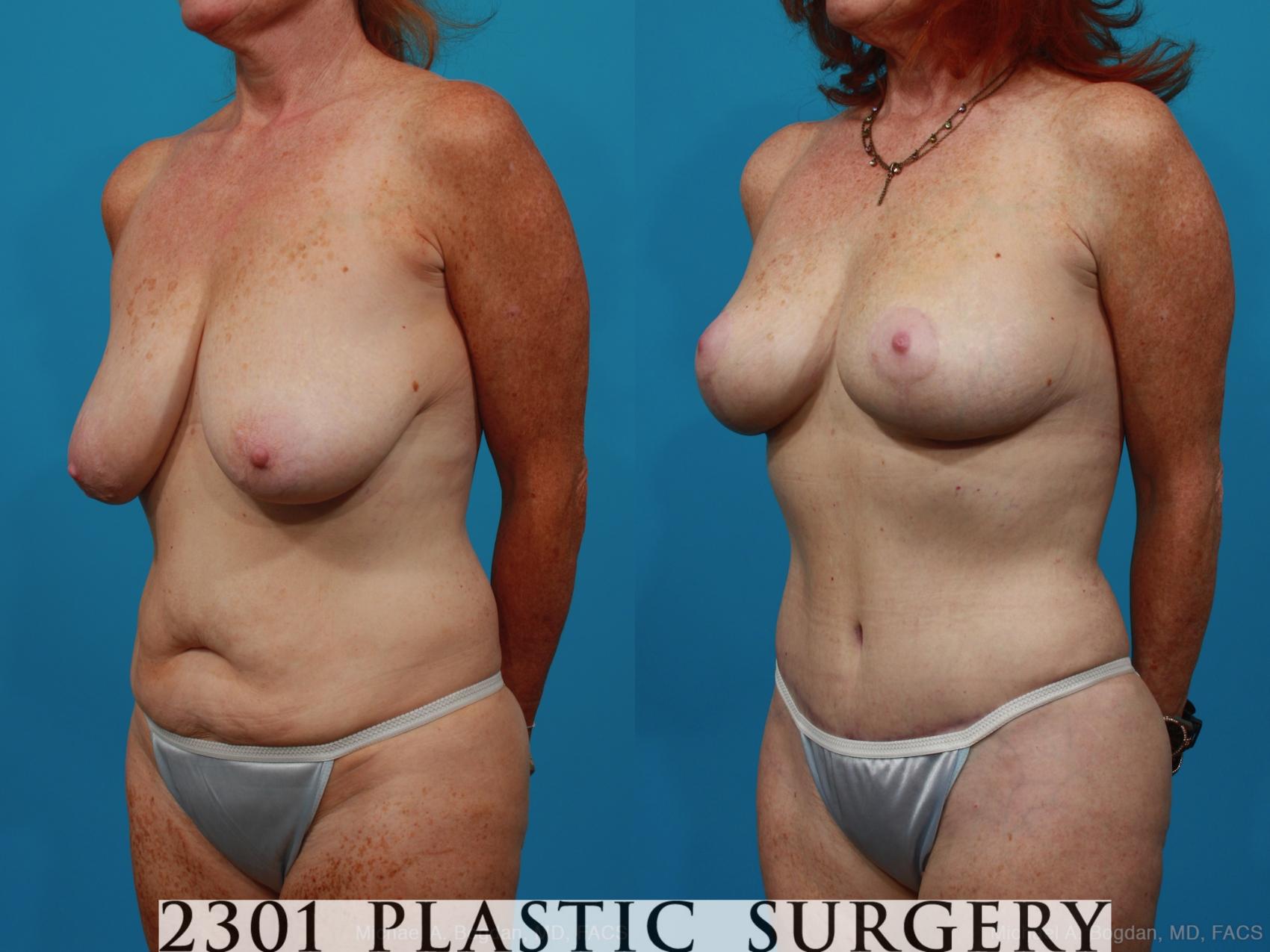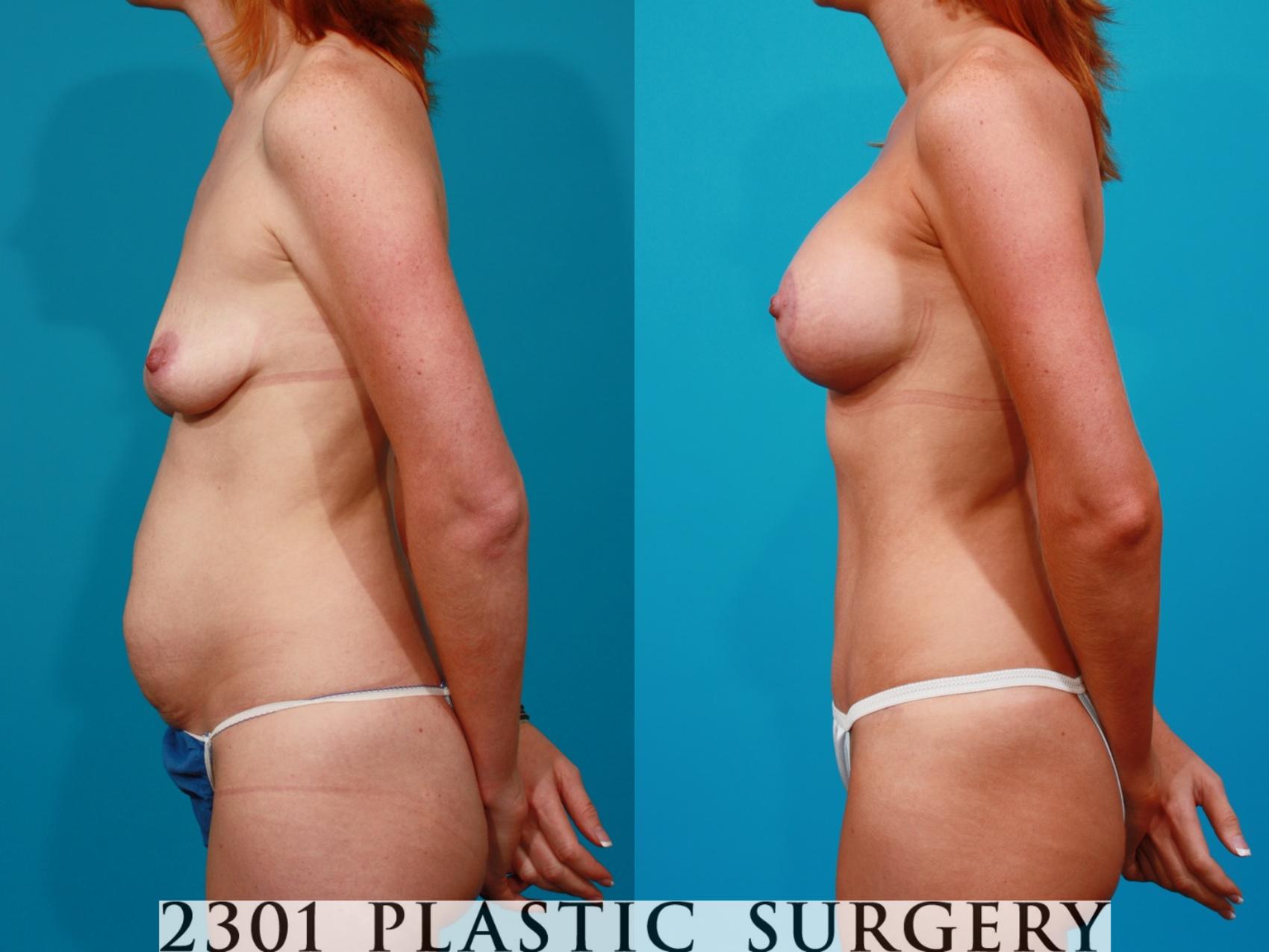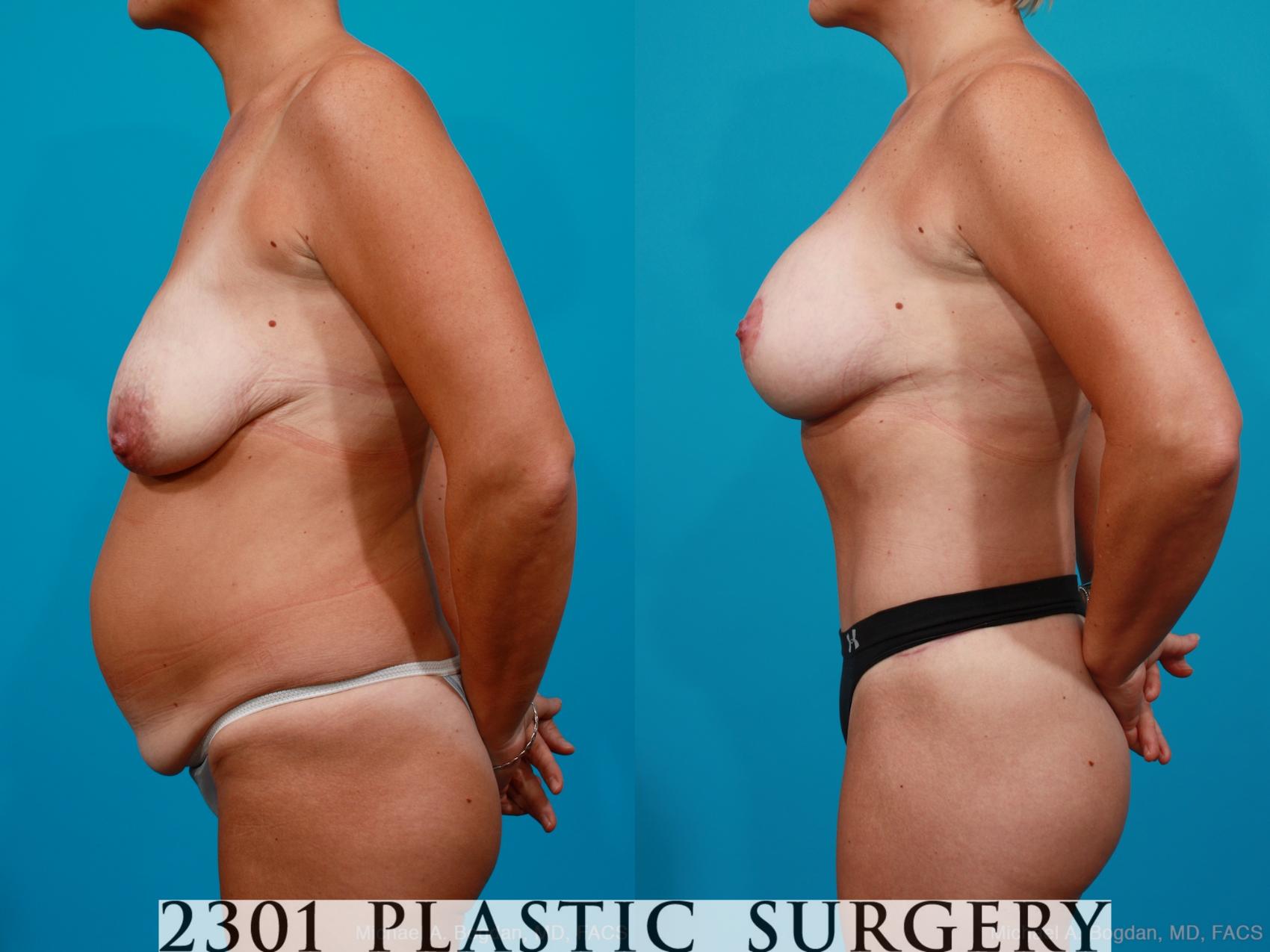Michael A. Bogdan, MD, FACS
Roger W. Cason, MD
2301 Plastic Surgery
2301 Westgate Plaza
Grapevine, TX 76051
Phone: (817) 442-1236
Fax: (817) 531-5851
Monday–Friday: 9 a.m.–5 p.m.
Breast Lift
Unfortunately for women, delicate breast tissue cannot withstand the effects of aging and gravity indefinitely. In addition, hormonal changes that occur during pregnancy can accelerate the breakdown of breast tissue, leaving the breasts sagging and droopy. Dr. Michael Bogdan and Dr. Roger Cason perform mastopexy surgery, also known as breast lift, for women who want to restore their breasts to a more youthful shape and position.
Communities We Serve
Dr. Michael Bogdan and Dr. Roger Cason are renowned throughout Texas for their exceptional surgical skill and compassionate care. Breast lift patients seek out their Grapevine plastic surgery practice from the following nearby communities:
- Fort Worth
- Frisco
- Plano
- The larger Dallas-Fort Worth metro region
Breast Lift (Mastopexy) Before & After Photos
WARNING:
This feature contains nudity. Please click OK to confirm you are at least 18 years of age and are not offended by such material.
What Is Breast Lift Surgery?
Mastopexy involves removing excess, stretched skin and tightening the surrounding tissue. During your consultation, our surgeons will discuss various surgical options with you. They understand it’s natural to want limited incisions, so they will carefully explain the reasoning behind their chosen techniques and incision patterns.
Which Breast Lift Is Right for Me?
There are 3 primary options when considering a breast lift. Which one is right for you depends on how much your breasts sag, the degree of asymmetry (if it exists), and the distance from the breast’s nipple to the inframammary fold where the breast connects to the chest wall. Generally, the more the breast has descended, the more extensive the surgery will be. Dr. Bogdan and Dr. Cason use their knowledge and training to determine the most suitable approach to help you achieve the most aesthetically pleasing results for your body and needs.
Concentric Breast Lift
Also known as a “doughnut” mastopexy, the concentric breast lift removes a small circle of skin from around the areola (the more darkly pigmented skin surrounding the nipple). The nipple is moved to a higher position on the chest while remaining attached to nerves and blood vessels. The remaining skin is reattached around the areola, resulting in a lifted, tightened breast. The resulting scar usually fades and blends in with the darker skin of the areola. This is the least invasive technique, appropriate for women with a small degree of sagging who require only a subtle lift.
Vertical Breast Lift
You may be a good candidate for a vertical (or “lollipop”) breast lift if your breasts don’t droop too much and the nipple is at or just slightly below the level of the inframammary fold. A vertical breast lift corrects moderate sagging and:
- Elevates the nipple position
- Allows for reduction of areolar size
- Tightens the breast by reducing the skin in a horizontal direction
- Results in less visible scarring than an anchor lift
Performing a Vertical Lift
During the surgery, a circular incision is made around the current areola. Based on the circle size, the decision is made whether to make the areola smaller and more proportionate to the breast. Next, an open circle incision is made on the upper portion of the breast, showing the nipple’s new location. Finally, a vertical incision is made from the edges of this open circle towards the inframammary fold, ideally avoiding the pigmented areolar skin. The incisions join at the level of the inframammary fold, creating a triangle.
After removing a small amount of skin between the circular incisions, the skin is then undermined on either side of the areola, and it is moved to the elevated location. Finally, the skin below the areola is sutured together at the midline.
Anchor Incision Breast Lift
The anchor-shaped mastopexy corrects the greatest degree of ptosis and is the most commonly used technique. It utilizes the same incision as the vertical mastopexy but adds a curved incision along the underside of the breast, resulting in the anchor shape. Through the more extensive incisions, more skin and breast tissue are removed, resulting in the greater degree of lifting and shaping that many breast lift patients require. The resulting scar is the same as for the lollipop breast lift but also includes an incision that runs horizontally along the inframammary fold.
The anchor incision lift:
- Elevates the nipple position
- Can reduce the size of the areola
- Tightens the breast by reducing the skin in both horizontal and vertical directions.
- Corrects breast position on the chest, if needed
Performing an Anchor Lift
The inframammary fold location is first marked. If the breast position is symmetric on the chest, the existing inframammary folds can be used. If one breast is higher on the chest, however, the fold is lowered on that side to improve overall symmetry. Next, the desired location of the nipple is drawn, and a keyhole pattern showing the vertical incision is designed. The keyhole marks the desired position of the nipple-areolar complex, and the vertical incisions allow for skin removal in a horizontal direction. A horizontal incision is then made so skin can be removed in the vertical direction as well.
A circle is designed around the nipple, allowing for a reduction in the size of the areola to make it more proportional to the breast. A small amount of skin is removed between the circular incisions, the skin is undermined on either side of the areola, and the areola is moved to its more elevated location. Suturing the incisions on the lower portion of the breast at the midline completes the procedure.
A breast reduction procedure requires the same skin incisions as an anchor incision breast lift, the only difference being the removal of excess breast tissue.
Breast Lift vs. Breast Augmentation:
Keep in mind that a breast lift will not increase overall breast volume. It is primarily about reshaping the breasts. If you want to increase breast size , breast augmentation will be necessary, and our surgeons will recommend a breast implant that is custom-sized to your cosmetic goals.
Augmentation Mastopexy: Combined vs. Staging
However, from the standpoint of achieving minimal scarring and a perkier, youthful appearance, we can achieve the best results with a staged approach. The combined procedure offers less control over the surgical outcome (changing more variables at the same time), inherently worse scars, and potentially higher complication rates. That’s why we commonly review the following pros and cons of a combined procedure vs. a staged approach with potential patients:
Pros for the Combined Breast Lift and Augmentation
- One operation (but you have a higher chance of needing a revision)
- Less expensive (the first hour is the most expensive for anesthesia / OR time)
- One recovery period
Pros for a Staged Breast Lift & Augmentation
- More control over the end result
- Better-looking scars (because of lower tension)
- Ability to achieve a perkier result
- Lower complication rates
- You might be happy with just a lift and not need an augmentation!
Get to know Dallas-Fort Worth plastic surgeons Dr. Michael A. Bogdan and Dr. Roger W. Cason of 2301 Plastic Surgery. They are highly credentialed surgeons who share a passion for their craft and a genuine concern for each patient's personalized care.
Breast Lift With Implants Scarring
A famous surgeon once said that plastic surgery is “a battle of beauty vs. blood supply,” and this directly applies to the augmentation mastopexy. The breast lift component of the operation is performed with scars below the breast, so you should think of it more as a “push” operation rather than a “lift” (the scars are effectively pushing the breast tissue upward to create the lift). Because of this, the weight of the breast is pushing down onto the scars, trying to stretch them out. Tension-free incisions tend to heal with very thin scars, while incisions healing under tension tend to widen. If you simultaneously add the weight of an implant above the incisions, you will automatically end up with wider scars than if you were only lifting the breast tissue.
Augmentation Mastopexy Results
You might remember from math class that it is relatively simple to solve equations with a single variable, but things become more complex as more variables are added. The same holds true with surgery. In a combined mastopexy augmentation, the surgeon must work with multiple variables, which include:
- Nipple position
- Skin envelope dimensions
- Breast volume removal
- Implant volumes
- Scar contracture
So, “getting it right” becomes inherently more challenging. If the operation is staged, fewer variables are being addressed during each operation, and it is far simpler to achieve the desired result.
Breast Lift With Implants Risks and Safety
Finally, we must highlight the issue of safety. Incisions heal best in a tension-free environment with good blood flow. In the case of the combined mastopexy augmentation, the skin envelope has been tightened, and the weight of the implant is pressing down on the incisions, both of which decrease blood flow. With decreased blood flow, healing is impaired, scars tend to be wider, wound healing complications are more likely, and infection rates are higher. If you still want to get it all done at once, can you? Yes—we are willing to use this approach as long as you have a complete understanding of the risks and benefits and you are accepting of a reasonable result from an inherently more difficult operation.
Commonly Combined Procedures
Our surgeons often combine breast lift surgery with other procedures such as breast augmentation, liposuction, and tummy tucks to address multiple aesthetic concerns simultaneously. Combining procedures delivers more dramatic results and often allows for a single recovery period. After pregnancy and breastfeeding, many women combine breast and body procedures, which is often called a Mommy Makeover. During your consultation, our surgeons will discuss your goals and determine the best combination of procedures to achieve your desired outcome.
What to Expect During Your Breast Lift Recovery
While breast lift recovery varies from patient to patient, you should plan for about a week of downtime devoted to rest and healing. This general overview helps you better understand what to expect after breast lift surgery:
- Permitted to shower: 24 to 48 hours
- Swelling begins to subside: 3 to 5 days
- Stop pain medication: 3 to 7 days
- Ready to resume driving (once off prescription pain medication): 1 week
- Return to non-strenuous work: 1 week
- Swelling and bruising significantly diminish: 3 to 12 weeks
- Resume exercise: 4 to 6 weeks
- Switch back to regular bra: 6 weeks
- Scars fade: 1 to 2 years
Breast Lift FAQ
Do I need to have a mammogram before surgery?
The recommended age to start screening mammograms varies and depends on the patient’s family history. For women who have no family history of breast cancer, screening mammograms start at age 40 (ACR / SBI guidelines) or 50 (USPSTF guideline). For women with a strong family history of breast cancer, it is recommended women start screening at age 30.
Breast lift operations require re-arrangement of the breast tissue itself and could potentially spread cancer if it is encountered during the operation. For this reason, our surgeons recommend a screening mammogram within the last year for all women over 40 or over 30 if there is a strong family history.
How soon will I be able to drive after surgery?
Most patients need prescription pain medicine for 3 to 7 days after surgery. While you are taking these medications, you are impaired and should not be driving. Take the medications while you need them, and once you have stopped using them for 24 hours, you should be OK to drive.
Is breast lift surgery painful?
Breast lift surgery is typically performed under general anesthesia, so you won’t feel pain during the procedure. After surgery, it’s normal to experience some initial discomfort, soreness, and swelling, which typically are not pronounced. Dr. Bogdon and Dr. Cason prescribe pain medication as part of your post-op protocol to help you manage any discomfort.
How long would a breast lift last?
While breast lift results are long-lasting (at least 8 to 10 years), keep in mind that the procedure doesn’t halt the aging process. Factors such as genetics, sun exposure, lifestyle habits, and underlying medical conditions can impact breast aging and appearance over time. Wear a supportive bra consistently to help maintain your results.
How many sizes do you go down after a breast lift?
Breast lift surgery may reduce your bra size by about 1 cup due to the removal of excess skin and sagging breast tissue. Women who wish to retain or enhance breast volume may benefit by combining their breast lift with implants.
Will the scars be visible?
Yes. Anywhere you place an incision, there will be a permanent scar. No one can guarantee that you will have a perfect scar, but there are things you can do to achieve the best scar possible. Please visit our scar care page for more info.
Your Next Step
A breast lift can take years off your appearance and help you feel more confident about the look and feel of your breasts! Our surgeons will make every effort to minimize scarring and share specific scar care recommendations with you following your breast lift. Remember, a staged breast lift and augmentation gives us more control and can maximize your results. As with any cosmetic surgery procedure, it is critical that you choose a plastic surgeon with high-level training, experience, and patient satisfaction.
If you are interested in learning more about breast lift surgery, request a consultation with Dr. Bogdan or Dr. Cason or call our cosmetic surgery practice serving the DFW area at (817) 442-1236. Patients considering breast lift surgery who live far from the practice can use our website’s Virtual Consult feature.







